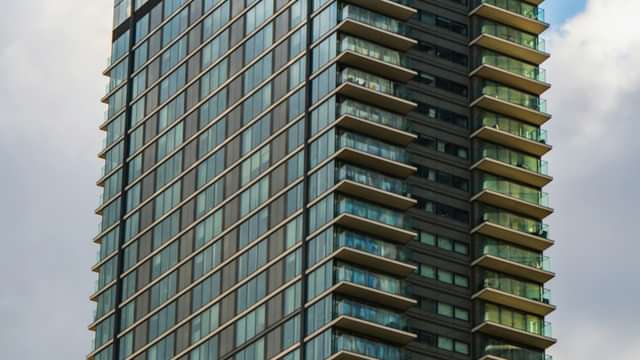The pandemic has caused an extraordinary period of challenge and adaptation. The impact on the real estate market, and the Government’s move to put in place measures to afford protections to tenants against enforcement action, has been well documented.
As we now move into a new phase of managing the impact of the pandemic, with the easing of Government restrictions on landlords’ remedies and enforcement options, we summarise here our insight on trends, issues and developments which are likely to continue to impact businesses.
Arbitrations under the Commercial Rent (Coronavirus) Act 2022 (“the Act”)
The previous restrictions on landlords’ remedies have been lifted and replaced with a new moratorium under the Act. The new moratorium prevents landlords from exercising various remedies (forfeiture, CRAR, insolvency, drawing down rent deposits and county court proceedings) for arrears which fall within a protected period (from 2pm on 21 March 2020, until the end of the relevant restrictions for the business in question, up to a longstop of 11.55pm on 18 July 2021) before 24 September 2022. This is to allow landlords and tenants a final period to refer debts to arbitration using the procedure under the Act.
To date, we have seen less demand than expected for the arbitration scheme under the Act. The reasons for this are likely to be manifold, including landlords and tenants having reached a negotiated settlement on covid arrears, landlords and tenants avoiding the risk of having their affairs made public if the other party requests an oral hearing under the arbitration scheme, and each party having to pay its own costs of the arbitration process.
For those who do go down the arbitration route, we may see satellite litigation around arbitration decisions.
Forfeiture of commercial leases
We expect to see the recovery of Covid rents occupying increasingly less time for landlords and tenants, but the impact of the pandemic and the easing of restrictions on landlords’ remedies will impact businesses in new ways.
In particular, landlords appear to be moving quickly to exercise other rights, including forfeiting leases by peaceable re-entry for non-payment of rents falling outside of the protected period. This may be due to landlords considering that tenants can pay but are withholding their rent, or alternatively that there is no realistic possibility of the tenant meeting its lease obligations moving forward and that the best option is to seek to bring the lease to an end.
Before forfeiting, landlords will also be considering the market generally (re-letting opportunities), development potential, and liability for rates before a new lease is entered into.
In turn, we are seeing increasing litigation by tenants applying for relief from forfeiture (that is, to have the forfeiture set aside and the lease reinstated as if it had never been determined). Tenants seeking relief from forfeiture for non-payment of rent will need to ensure that they act promptly. Where the forfeiture is by peaceable re-entry, the tenant can apply for relief within six months of re-entry, but any delay will be taken into account by the court in deciding whether to grant relief. In order to be successful in making such an application, the tenant will also need to be in a position to pay (a) any arrears and (b) the landlord’s costs.
Tenant insolvencies
The Corporate Insolvency and Governance Act 2020 introduced temporary measures to assist businesses affected by the pandemic. These measures included restrictions on the use of statutory demands and winding up petitions and introduced moratoriums preventing actions against creditors.
As Government support measures for tenants fall away (including a return of landlords’ rights to serve a statutory demand and to issue a winding up petition in respect of arrears which do not fall within the protected period), we expect there will be a marked increase in tenant insolvencies.
If a tenant has proposed, is imminently entering into, or has entered into, a formal insolvency procedure, then commercial landlords will need to consider their options to recover arrears in the face of their commercial tenant’s insolvency. These options may include (subject to lease terms and any moratorium created by the insolvency) drawing down on rent deposits, calling upon a former tenant or guarantor pursuant to the lease or an authorised guarantee agreement, recovering rent from an under-tenant and/or terminating the lease.
Landlord redevelopment
A noticeable trend has also developed whereby landlords are opposing the grant of new leases to tenants under the Landlord and Tenant Act 1954 (“the Act”). We are seeing increasing numbers of landlords opposing renewal on the ground that they intend to demolish or reconstruct the premises comprised in the holding or a substantial part of those premises, or to carry out substantial work of construction on the holding or part of it. This is commonly known as the “redevelopment” ground of opposition.
We expect that this trend is in part due to landlords having had the opportunity to consider their sites/portfolios and consider redevelopment potential, and in part due to new permitted development rights.
Landlords will need to carefully consider whether they can satisfy the statutory requirements to oppose lease renewals for business tenants. In particular, they will need to ensure that the works proposed constitute substantial works and fall within the definition under the Act. Landlords will also need to be able to show that any proposed works will be undertaken regardless of whether the tenant applies for a new tenancy; any intention to carry out the works must be unconditional.
The tenant’s statutory right to compensation from a landlord where a landlord opposes renewal on “redevelopment” grounds will also need to be considered by landlords.
Lease renewals
Tenants are continuing to use their lease renewal rights under the Act to engineer lower rents. In particular, we continue to see tenants trying to benefit from depressed market rents by serving renewal requests, to fix the date for assessment of the new rent and potentially reduce it from the current passing rent.
We may also continue to see tenants seeking short leases, with maximum flexibility.















































































